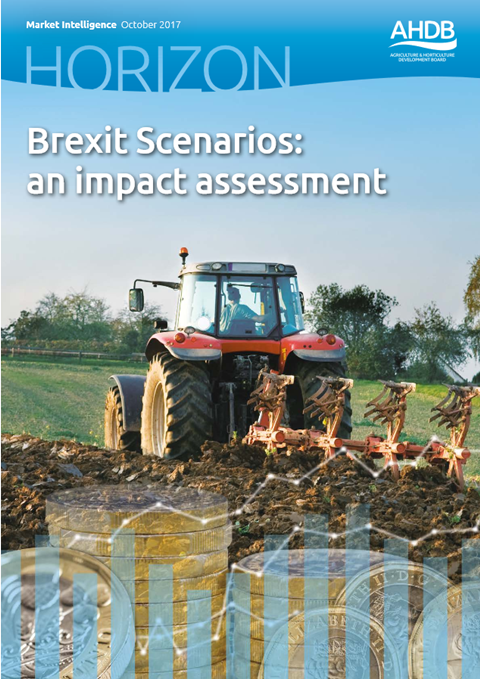AHDB has released a modelling report, titled Brexit scenarios: an impact assessment, which suggests that average farm profitability could drop from £38,000 to £15,000 a year in the worst case scenario as a result of policy and performance challenges that could arise from Brexit.

Mapping out a range of possible post-Brexit situations, the report models the effect on Farm Business Income (FBI) across agriculture levy-paying sectors.
Its research focused on three possible scenarios after Brexit; the “business-as-usual” situation, with trade maintaining the current status quo, “unilateral liberalisation”, which implies increased competitions from imports outside the EU and would see reduced subsidies, and a “cliff-edge” Brexit with trade based on World Trade Organisation rules and tariffs.
According to AHDB, the baseline for FBI for less favoured area sheep and beef is £16,166.
FBI remains “virtually unchanged” under the first scenario, but it drops half under “unilateral liberalisation”, while under the third scenario, FBI becomes negative, at -£1,409.
According to AHDB, the “key explanation” for the 51% reduction in FBI is the “lower value of production driven by substantially lower sheep prices and fractionally lower beef prices”, adding: “Higher regular labour costs have a larger negative impact on FBI than savings in regulatory compliance costs.”
In addition, FBI falls by 109% under scenario three and becomes negative “due to the inability of marginally increased Pillar II payments to compensate for the loss of Pillar I support”.
The report adds that the decrease in the value of sheep production is offset by an increase in the value of beef production.
Is says: “The future prospects for the sheep and beef LFA producers look especially challenging under this scenario; only the most efficient producers will be economically viable without off-farm income.”
For lowland sheep and beef, AHDB’s modelling work indicates a 7% increase in FBI under the first scenario, while in the “unilateral liberalisation” situation, FBI “decreases by 81%, as the loss of Pillar I payments (£15,963) is partially compensated by increases in Pillar II payments, but production output decreases as output from the sheep enterprise falls considerably”.
Under the third scenario, FBI decreases by 77% s the loss of Pillar I payments is mitigated by an increase in the value of beef output, which offsets the lower value of sheep output.
Phil Bicknell, AHDB market intelligence director, said: “This analysis underlines the fact that performance matters.
“As individual farms, we know that we can’t determine policy but we can recognise that performance is key to preparing for the challenges ahead.”
Industry reaction
On reading the modelling report, NFU Scotland said it “justifies the lobbying priorities the Union has been pursuing”, adding that it is “beyond doubt that this AHDB work demonstrates the vital role that continued, targeted farm support will have, not least through an unknown transition period”.
NFU Scotland’s director of policy, Jonnie Hall, commented: “The evidence presented underscores NFU Scotland’s calls for continued support refocused on action-based measures to bring about improved productivity across sectors while delivering environmental benefits and safeguarding and enhancing production standards.
“That would create the bed rock of a thriving farming, food and drinks sector for the post Brexit era.”
On the other hand, the National Pig Association (NPA) has urged caution “in reading too much” into the report, which has projected income rises under each individual scenario.
A statement from NPA said: “The projected increases are driven mainly by increases in UK market prices caused by the additional costs of imports, particularly Scenario 3 where tariffs dramatically hike up the cost of imports. This would enable investment in the industry.“There are some major caveats, however. For example, the huge rise in income under Scenario 3 would reduce once the industry has time to adapt and increase production, while the impact of higher prices on consumer demand also needs to be taken into account.”
NPA chief executive, Zoe Davies, commented: “The analysis makes the future look jolly bright for the pig sector especially where scenarios raise the costs of imports.
“But the headline numbers need to be taken with a very large pinch of salt as there are so many variables that could have a much bigger impact than this report predicts, for example, for the loss of key EU export markets, such as sow carcases, to Germany and an influx of cheap, lower standard pork imports under future trade agreements.”
The report can read in full by clicking here.
This story was originally published on a previous version of the Meat Management website and so there may be some missing images and formatting issues.















